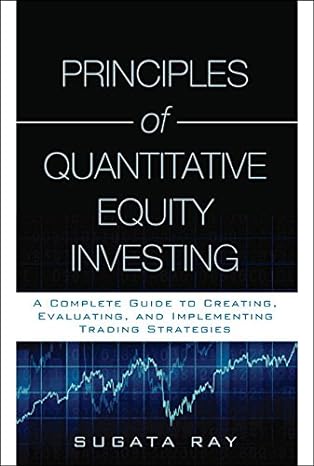Question
( I DON'T REALLY UNDERSTAND THE LAST PART BECAUSE WHERE DO THE NUMBERS 0.42 AND 0.29 COME FROM, CAN SOMEONE PLEASE HELP ME) Here is
( I DON'T REALLY UNDERSTAND THE LAST PART BECAUSE WHERE DO THE NUMBERS 0.42 AND 0.29 COME FROM, CAN SOMEONE PLEASE HELP ME)
Here is the condensed 2020 balance sheet for Skye Computer Company (in thousands of dollars):
CONDENSED BALANCE SHEET FOR SKYE COMPUTER COMPANY
2020
Current assets $2,000
Net fixed assets 3,000
Total assets $5,000
Current liabilities $900
Long-term debt 1,200
Preferred stock 250
Common stock 1,300
Retained earnings 1,350
Total common equity $2,650
Total liabilities & equity $5,000
Skye's earnings per share last year were $3.20; the common stock sells for $55, last years dividend was $2.10, and a flotation cost of 10% would be required to sell new common stock. Security analysts are projecting that the common dividend will grow at a rate of 10% per year. Skye's preferred stock pays a dividend of $3.30 per share, and new preferreds could be sold at a price to net the company $31 per share. The firm can issue long-term debt at an interest rate (or before-tax cost) of 10%, and its marginal tax rate is 34%. The market risk premium is 5%, the risk-free rate is 6%, and Skye's beta is 1.316. In its cost of capital calculations, the company considers only long-term capital, hence it disregards current liabilities.
a. Calculate the cost of each capital component, that is, the after-tax cost of debt, the cost of preferred stock, the cost of equity from retained earnings, and the cost of newly issued common stock. Use the DCF method to find the cost of common equity.
b. Now calculate the cost of common equity using from retained earnings using the CAPM method.
c. What is the cost of new common stock based on the CAPM? (Hint: Find the difference between re and rs as determined by the DCF method and add that differential to the CAPM value for rs.)
d. If Skye continues to use the same capital structure, what is the firm's WACC assuming that (1) it uses only retained earnings for equity? (2) If it expands so rapidly that it must issue new common stock? To calculate Skye's WACC, we need to determine the cost of each capital component and its proportion in the firm's capital structure.
First, let's determine the weights for each capital component:
Explanation:
Debt: $1,200 / $5,000 = 0.24 or 24%
Preferred stock: $250 / $5,000 = 0.05 or 5%
Common equity: $2,650 / $5,000 = 0.53 or 53% (using only retained earnings)
Total: 1.00 or 100%
Next, let's calculate the cost of each capital component:
Debt: cost = before-tax interest rate x (1 - marginal tax rate) = 10% x (1 - 0.34) = 6.6%
Preferred stock: cost = dividend / net proceeds = $3.30 / $31 = 10.65%
Common equity: cost = risk-free rate + beta x market risk premium = 6% + 1.316 x 5% = 12.58%
Retained earnings: no additional cost, so its cost is 0%
Explanation:
Now we can calculate Skye's WACC using only retained earnings:
WACC = wd x kd + wp x kp + wc x kc WACC = 0.24 x 6.6% + 0.05 x 10.65% + 0.53 x 12.58% WACC = 10.95%
If Skye must issue new common stock to finance its growth, we need to include the cost of issuing new equity. Since the flotation cost is 10%, the net proceeds from selling new common stock would be:
Net proceeds = price per share x (1 - flotation cost) = $55 x (1 - 0.10) = $49.50
Using the constant growth model, we can calculate the cost of issuing new common stock:
kp = (D1 / net proceeds) + g where D1 is the next expected dividend and g is the expected growth rate.
Explanation:
D1 = D0 x (1 + g) = $2.10 x (1 + 10%) = $2.31 kp = ($2.31 / $49.50) + 10% = 14.7%
Explanation: Now we can calculate Skye's WACC assuming it uses new common equity: WACC = wd x kd + wp x kp + wc x kc WACC = 0.24 x 6.6% + 0.05 x 10.65% + 0.42 x 12.58% + 0.29 x 14.7% WACC = 12.41% ( I DON'T REALLY UNDERSTAND THIS PART BECAUSE WHERE DO THE NUMBERS 0.42 AND 0.29 COME FROM)
Step by Step Solution
There are 3 Steps involved in it
Step: 1

Get Instant Access to Expert-Tailored Solutions
See step-by-step solutions with expert insights and AI powered tools for academic success
Step: 2

Step: 3

Ace Your Homework with AI
Get the answers you need in no time with our AI-driven, step-by-step assistance
Get Started


